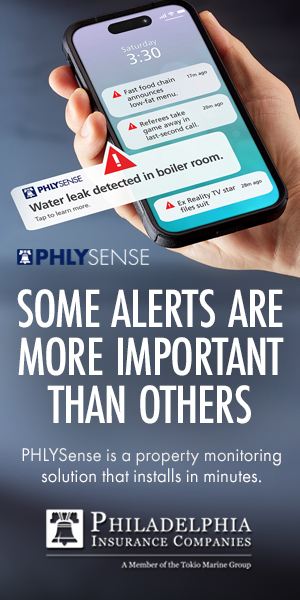Product that addresses challenges
of severe weather events gains traction
By combining parametric with traditional property insurance,
insurance professionals can offer clients a more robust risk management strategy … .
By Dustyne Bryant, CIC, CISR
In recent years, dwelling owners have faced the evolving landscape of property insurance in a hard market, marked by ever-changing underwriting restrictions, separate wind and hail deductibles (often required as a percentage of Dwelling Coverage), and higher minimum all-other-peril deductibles.
In years past, voluntarily increasing homeowners policy deductibles was often a strategy for lowering policy premiums for improved retention, but this is no longer the case. Higher and specific peril deductibles are no longer advantageous beyond being approved for policy issuance. Higher deductibles result in higher out-of-pocket costs for policyholders and, in many instances, could leave them without the option to buy a home if the lender will not accept the high deductible(s) required by the insurance company.
One promising solution gaining traction in the insurance industry is parametric wind coverage. This innovative product addresses the challenges agents and consumers face with traditional insurance policies and offers insureds a practical way to mitigate risks associated with severe weather events.
A deductible dilemma
As weather patterns grow increasingly erratic and severe storms become more frequent, insurance companies have been forced to adapt. In its U.S. Billion-Dollar Weather and Climate Disasters research, The National Centers for Environmental Information reports that “the U.S. has sustained 403 weather and climate disasters since 1980.”
While Hurricane Katrina in 2005 still tops the charts with an estimated $201.3 billion loss, Hurricanes Milton, Helene, Francine, Debby, and Beryl in 2024 are estimated to cost a combined $124 billion with Milton and Helene accounting for $78.7 billion of that total. National Oceanic and Atmospheric Administration (NOAA) data indicates that severe weather outbreaks characterized by wind and hail (including tornados) accounted for $44 billion between March and July 2024.
One way insurers manage their risk is by increasing minimum deductibles or introducing separate deductibles for specific perils, such as wind and hail. For dwelling owners, this means they must pay a higher portion of the loss before their insurance coverage kicks in. Separate wind and hail deductibles, often calculated as a percentage of a dwelling’s insured value, can leave policyholders facing thousands of dollars in expenses after a storm.
For example, a policyholder who has $500,000 in Dwelling Coverage with a $5,000 flat deductible will pay $5,000 out of pocket to replace their $15,000 wind-damaged roof. However, a policyholder with a 2% wind and hail deductible will pay $10,000. When the deductible is 66% of the claim, a knowledgeable insurance advisor knows that this claim will cost the client more in renewal premium and loss of claim-free discounts over a five-year span than the remaining $5,000 that the insurance company will pay.
This market shift in deductible requirements has created a coverage gap, particularly for middle-income families who may struggle to cover high deductibles. When facing non-optional higher deductibles, a policyholder may forgo filing claims (the intended result) or making timely repairs (an unintended result).
In addition, when someone is purchasing a home, lenders have specific insurance coverage requirements to help protect their property interests. Generally, these requirements are replacement cost of the dwelling (ideally up to the value of the loan), coverage for impactful perils (like fire, windstorm, and maybe even flood), and deductibles low enough for the homeowner to afford them.
In my experience with dwellings valued in the $250,000 – $750,000 range, lenders will not accept deductibles over $5,000 – $10,000. This misalignment between lender and insurer requirements is beginning to leave some homebuyers in a bind and unable to close on their dream home, creating yet another barrier to homeownership.
This is where parametric wind coverage steps in as a game-changer.
What is parametric wind coverage?
Parametric insurance differs from traditional indemnity-based policies in that it pays out based on predefined parameters rather than the actual loss incurred. In the case of parametric wind coverage, the payout is triggered when specific criteria, such as wind speed or storm intensity, are met. These parameters are typically measured by reliable sources like the National Weather Service or local meteorological stations.
For example, a parametric wind policy, like one from Sola Insurance, might pay a fixed amount of $6,000 if a sustained hail event in the insured’s area occurs. Payment is generally not dependent on the extent of damage to the property but on the occurrence of the event itself. The need for claims adjusters to assess damages is eliminated, which allows insureds to receive funds quickly, often within days of the event.
Let’s consider the benefits of parametric coverage:
- Affordability. At the time this column was written, parametric coverage was very affordable. Having quoted this type of coverage myself, a $15,000 payout for a tornado event policy in my area costs less than $100 a year. Talk about a cost-effective supplemental option for insureds seeking additional protection.
- Quick payouts. Since traditional claims processes (submission, review, adjustment, payment) are unnecessary, the speed at which payouts are made allows for quick payment. This can be invaluable for insureds in need of immediate funds for temporary housing, repairs, or other urgent needs. In addition, there are no restrictions to how an insured uses the claim payment.
- Closing the deductible gap. Parametric policies can be used to offset high deductibles on traditional homeowners insurance that are becoming problematic with mortgagees or cash-strapped consumers.
- Transparency. Policyholders and insurance professionals know precisely what prompts a payout and how much they will receive after a covered event.
But how?
If you are scratching your head about how parametric coverage seems to be such an effective solution, in short, parametric insurance is capable of doing a lot with a little because of technology. Utilization of high-resolution satellite imagery, data reporting centers [like NOAA and, the NFIP National Flood Insurance Program] real-time weather monitoring, use of data individually placed sensors, and advanced data analytics allow insurers to set precise triggers. In addition, expedience of claim payment processing is as simple as having a bank account on file with the insurer to issue payment.
Not an all-encompassing solution
Despite its advantages, parametric insurance is not without its challenges. Two common concerns are trigger risk and basic risk hazard.
Trigger risk hazard occurs when the trigger is not met despite damage. This results in consumers not receiving payment when they may expect to, leading to mistrust of the product.
Basic risk hazard is the difference between expected payment and actual compensation of a loss, according to a Moody’s article, “The Politics of Basis Risk.” This hazard may occur when a parameter of the policy triggers despite there being no damage to the insured property. This means that there is potential for overpayment and misalignment of the product design with actual losses sustained. To mitigate this, insurers are continually refining trigger parameters to align more.
Another concern with parametric coverage is that consumers may be nickel-and-dimed to death by purchasing a separate policy for each type of peril they wish to offset. Parametric coverage is becoming more available for various perils, including earthquake, flood, water loss (not to be confused with flood), wind, hail, tornado (all three separate types of losses), hurricane, drought, excessive rainfall, wildfire, and more. I previously stated that a parametric tornado policy in my region might cost just under $100—now multiply that by the 10 perils we just identified. The cost adds up quickly.
Understand that parametric coverage is designed to supplement traditional homeowners insurance, not replace it. Traditional homeowners coverage provides comprehensive protection against a wide range of perils and personal liability versus the one-off specific peril that parametric coverage addresses. By combining parametric with traditional property insurance, insurance professionals can offer clients a more robust risk management strategy that balances affordability with accessible protection.
The future of property and
parametric coverage
The demand for creative and efficient insurance solutions will only increase as weather events intensify in frequency and severity. Advancements in technology utilized within the insurance industry will allow for greater accuracy, accessibility, and affordability, providing insurers and consumers with versatile solutions.
Parametric wind coverage represents a forward-thinking solution to the challenges posed by rising deductibles and wind/hail deductibles being mandated by traditional Home insurance companies. By providing transparent coverage and quick payouts, these policies enable insureds, insurers, and local economies the ability to recover more efficiently from severe storms.
Long story short, parametric coverage offers peace of mind to consumers and comprehensive production solutions for insurance advisors to meet the needs of their clients.
The author
Dustyne Bryant, MBA, CIC, CISR, is an experienced P&C insurance professional dedicated to personal lines since 2007. She has a demonstrated strength in technical comprehension cultivated through working with a vast selection of regional, national, and surplus lines carriers as a licensed agent, account manager, department leader, curriculum writer, instructor, and as a nationally recognized industry speaker. She graduated from the University of Arkansas at Little Rock, obtaining her MBA (2015), B.S. cum laude, Criminal Justice (2011), A.A., Law Enforcement (2010), and Conflict Mediation Graduate Certificate (2015). She earned her CISR designation in 2011 and CIC designation in 2012 from the Risk & Insurance Education Alliance. Previously the Director of Risk & Insurance Education and Research, Personal Lines Academic Director, and host of the Awkward Insurance Podcast for the Risk & Insurance Education Alliance, Dustyne continues to be a presence in the industry and collaborates with industry educators, colleagues and other experts to deliver relevant and well-researched practical educational content to growing risk and insurance professionals.





